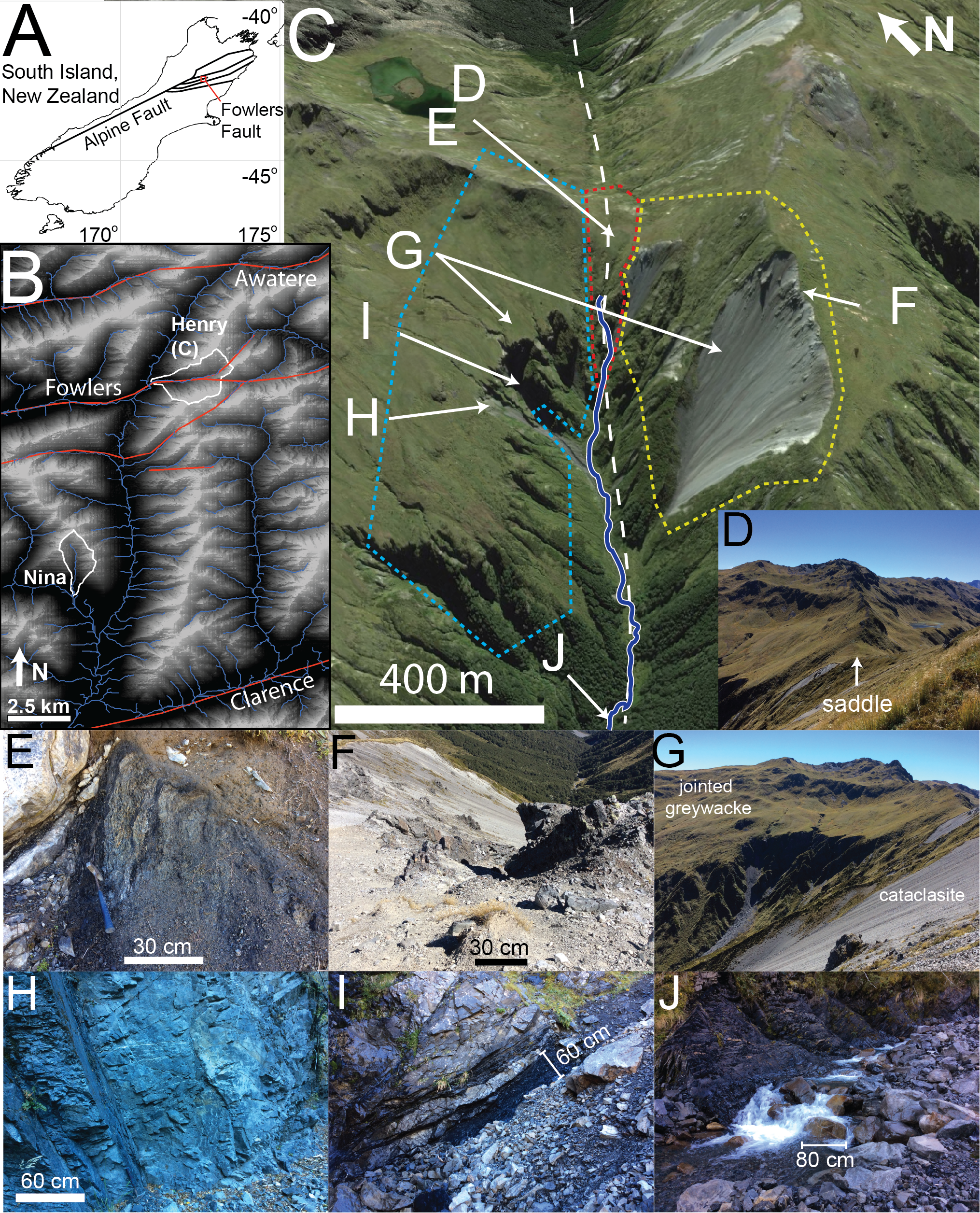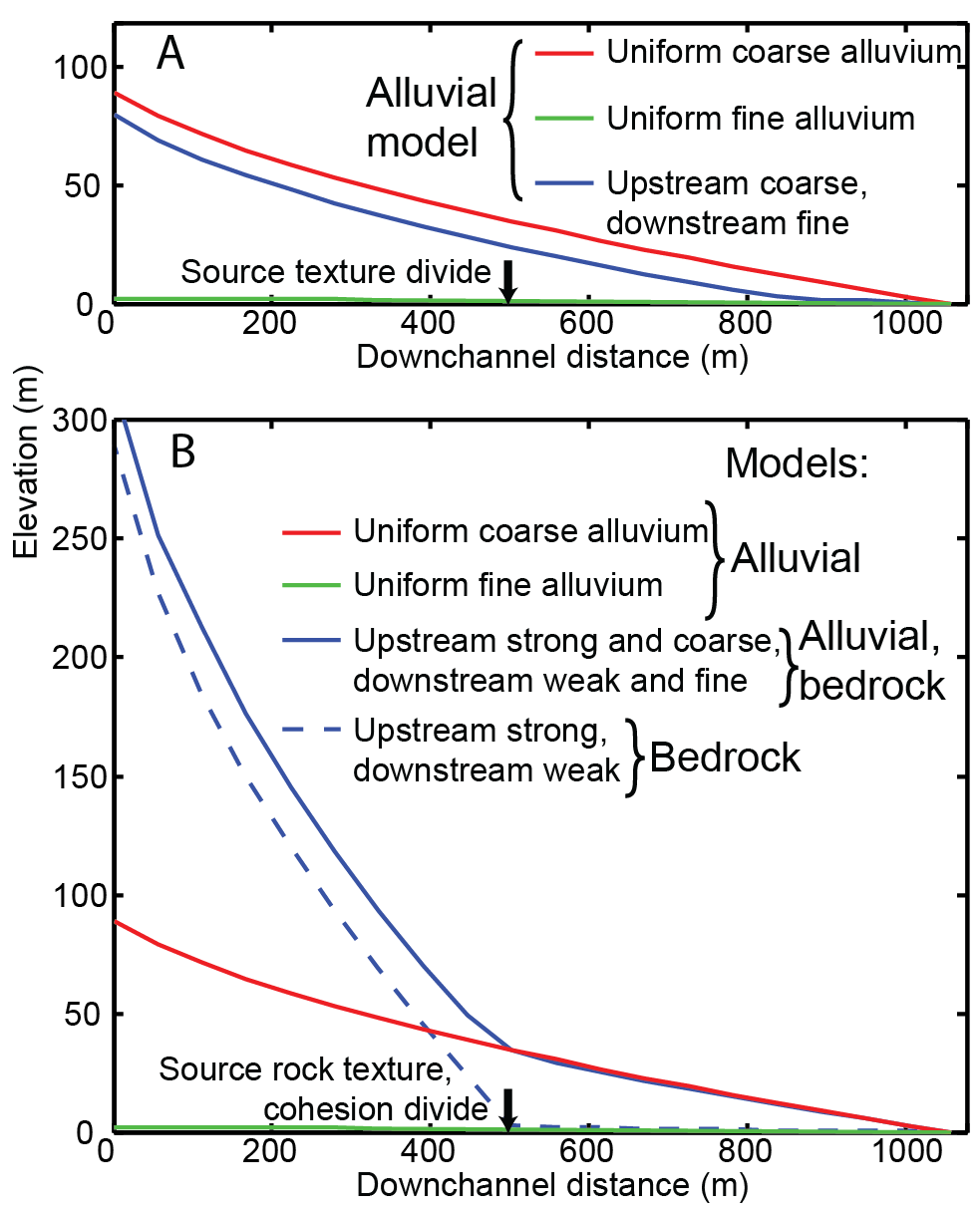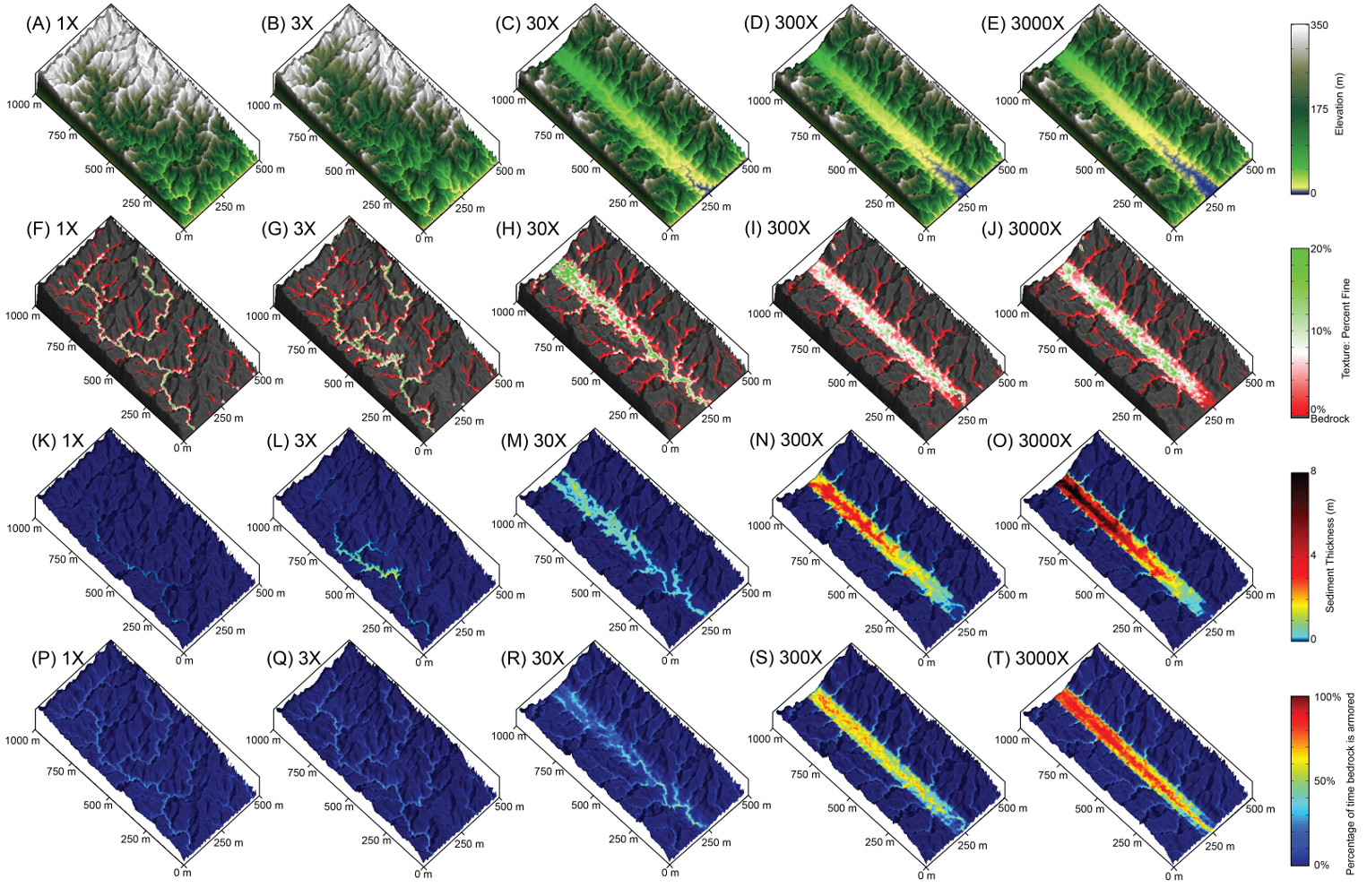Connections between rock mass strength and grain size in alluvium
The sensitivity of fluvial erosion to rock damage
Roy, S.G.; Tucker, G.E.; Koons, P.O.; Smith, S.M.; Upton, P.
0. Abstract
We explore two ways in which the mechanical properties of rock potentially influence fluvial incision and sediment transport within a watershed: 1) rock erodibility is inversely proportional to rock cohesion, and 2) fracture spacing influences the initial grain sizes produced upon erosion. Fault weak zones show these effects particularly well because of the sharp cohesion and fracture spacing gradients associated with localized shear abrasion. A natural example of fault erosion is used to motivate our calibration of a generalized landscape evolution model. A suite of numerical experiments are used to study the sensitivity of river erosion and transport processes to variable degrees of rock weakening. In the experiments, rapid erosion and transport of fault gouge steers surface runoff, causing high order channels to become confined within the structure of weak zones. Erosion of adjacent, intact bedrock produces relatively coarser grained gravels that accumulate in the low relief of the eroded weak zone. The thickness and residence time of sediments stored there depends on the relief of the valley, which in these models is dependent on the degree of rock weakening. The frequency at which the weak zone is armored by bedload increases with greater weakening, causing the bedload to control local channel slope rather than the intermittently exposed bedrock. Conversely, small tributaries feeding into the weak zone are predominantly detachment-limited. The prevalence of features that impose mechanical heterogeneity on the Earth’s surface exert significant controls on the rates and patterns of erosion, and it will be important to recognize the role of heterogeneity in future landscape evolution studies.


